Mongabay.com: Life and new limbs: Creative thinking, 3D printers save injured wildlife
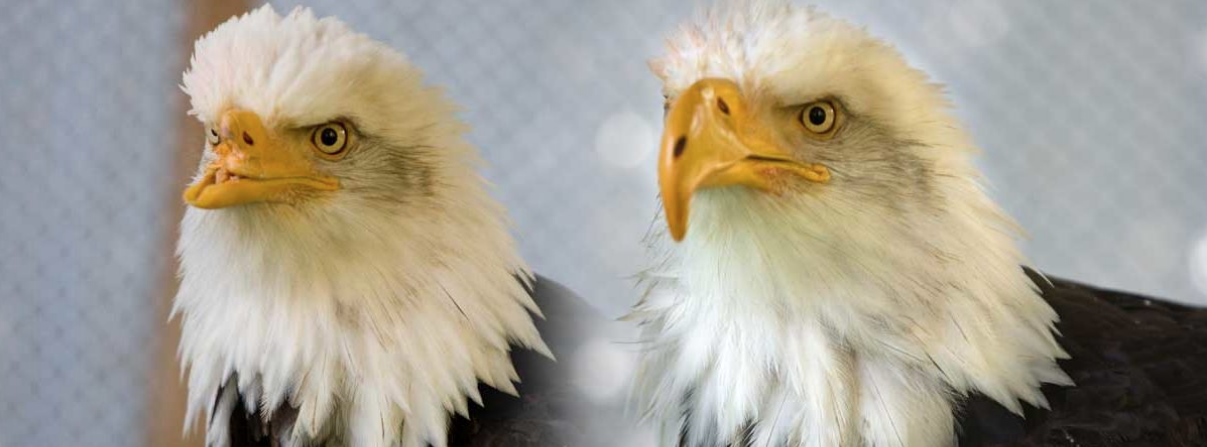
- Prosthetics for injured animals are becoming increasingly possible and accessible thanks to 3D printing. Historically, artificial devices for wildlife have been expensive and very time-consuming to produce. 3D printing is changing that calculus by making it easier to design and build better-fitting prosthetics.
- A team of dedicated caregivers with vision, creativity and persistence is often the common thread that is key to helping injured animals.
- While 3D printing of animal prosthetics allows for multiple iterations that helps improve the device so that the animal can function more normally, size and materials can limit their use.
- Today, the use of 3D printers to aid animals is expanding beyond prosthetics, with veterinary anesthesia masks for small primates and other experimental uses being tried.
When caregivers at the Weltvogelpark Walsrode bird park in Germany returned to the aviary one morning, they were heartsick to discover that a secretary bird they called Söckchen, or “Little Sock,” had broken her leg inside her enclosure. They guessed that something must have scared her and made her jump, causing a severe break.
Secretary birds (Sagittarius serpentarius) need their legs. Found in Africa’s savannas, they are large, mostly terrestrial birds; their strong, sturdy legs are vital not only for walking but for capturing snakes and other prey. Often, they hunt by stomping the ground to flush out animals, then run them down and strike with their beak or feet to stun or kill them. In the wild, the loss of a leg would be a death sentence. And in captivity it was a severe debilitation. With her leg severed, Söckchen became depressed, was not eating well, and rarely walked about.
To help, the bird keepers came up with an idea: a prosthetic leg made using a 3D printer.
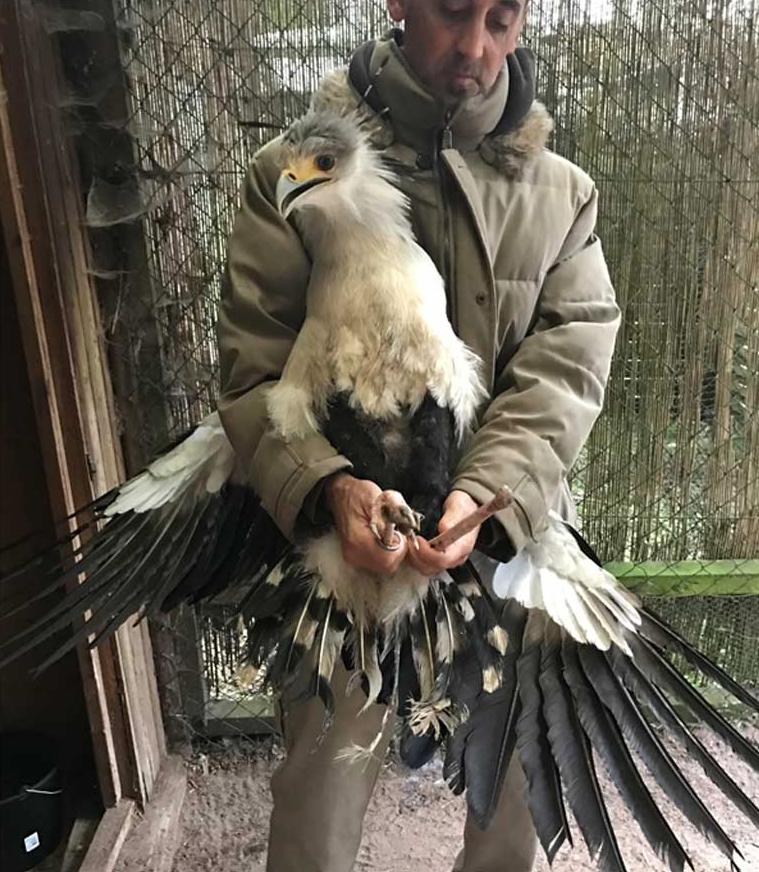
Three-dimensional printing has revolutionized the use of prosthetics to help injured animals. In the past, artificial devices fitted to wildlife were both extremely costly and time-consuming to produce. For instance, building a prosthetic tail flipper for a dolphin named Fuji in Japan in 2003 reportedly cost $100,000, and designing one for another dolphin, Winter, in Florida in 2007 required 18 months.
By contrast, 3D printing can be less expensive and time-demanding. Because the design is done on a computer, customization and replication of even the small intricacies of a beak, tail or other animal part is made easier. Detailed customization not only helps the animal to use the artificial design as it would a natural body part, but also aids with comfort and acceptance.
To help Söckchen, the bird keepers at Weltvogelpark contacted Lars Thalmann, a mechanical engineer and volunteer with e-NABLE, an online global community of volunteers who use their skills with 3D printers to make free and low-cost prosthetic devices for people in need.
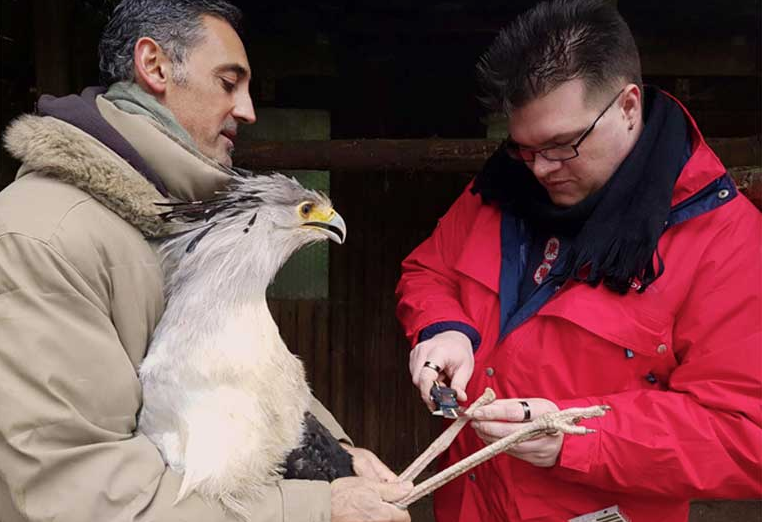
Thalmann recalls the moment when he first arrived to take measurements of Söckchen’s leg; some of the keepers cried with happiness because it meant she had a chance at a normal life.
“Söckchen is actually a very nice and kind bird,” Thalmann says. “If she likes you she tries to hobble up to you, even with the missing 80 mm [3 inches] of the one leg. As soon as she reaches you, she would sit beside your leg a bit exhausted and lean against you, as if she wanted to say, ‘Ohhh I finally made it, I missed you.’”
While the 3D technique still faces size and materials constraints, it is ideal for many applications — like Söckchen’s leg. Indeed, her example is just one in a growing number of success stories where animal rescuers tap into 3D printing to generate prosthetics, giving injured animals a new lease on life.
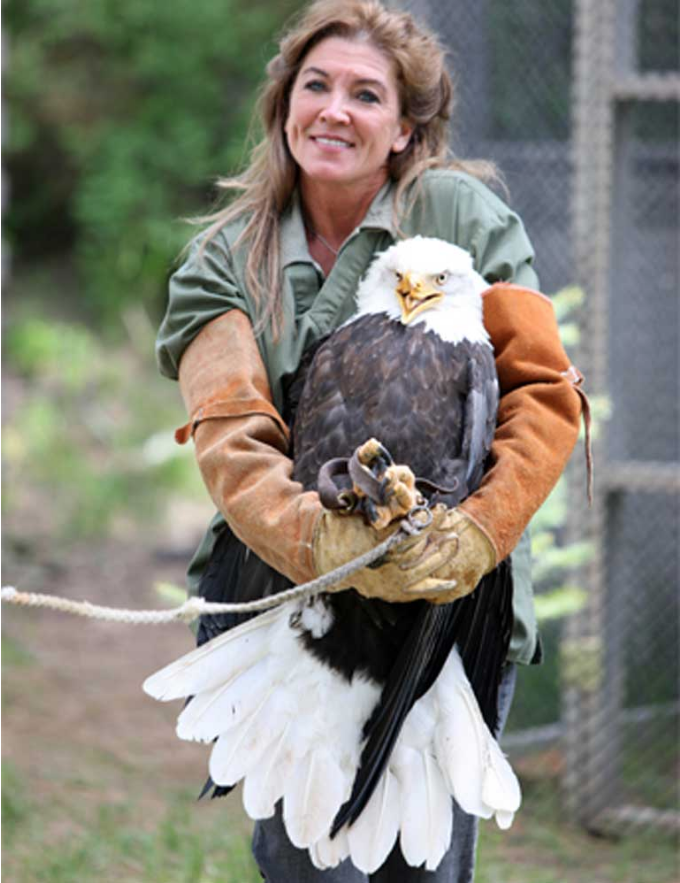
Beauty and her beak
In June 2008, a bald eagle (Haliaeetus leucocephalus) named Beauty became the first known bird to receive a 3D-printed beak. But that experimental prosthetic was a long time in coming.
The adult eagle had been rescued several years earlier near a landfill in Dutch Harbor, Alaska. Despite bountiful available food, she was emaciated. Most of her upper beak was missing, likely shot off by poachers. Normally, eagles use their sharp curved beaks to rip chunks of flesh from prey. Anchorage raptor rehabilitators cared for her, at first feeding her a liquid diet through a tube, and later solid food with forceps. But her disability was severe. The bullet had entered the base of her nasal cavity, leaving her sinuses exposed.
In 2007, raptor biologist Janie Veltkamp moved Beauty from Alaska to Birds of Prey Northwest, her rescue center in Idaho, where she assembled a team that included mechanical engineers, dentists and veterinarians. Together they designed, built and fitted Beauty with a prosthetic beak.
“My first degree was in nursing,” Veltkamp explains. “We put prosthetic limbs on people. Why not try it on a bald eagle?”
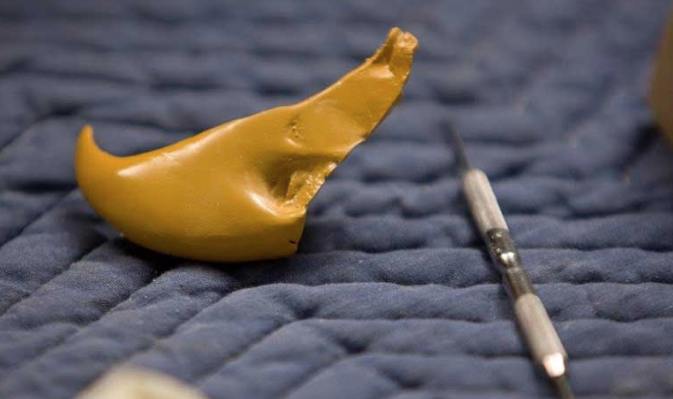
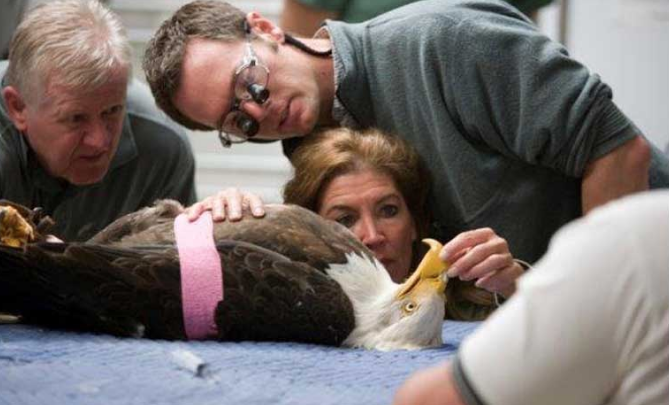
The work required meticulous finesse. The first step: taking X-rays of Beauty’s skull and remaining beak. Then the team took an impression of what remained of the eagle’s beak in a procedure similar to creating a dental impression for the fitting of a crown. Using these measurements of what Beauty had lost, together with comparative data from the skull of an uninjured female eagle, engineers designed a prototype, 3D printed it, and tried it on Beauty. Making adjustments, they repeated the process until, finally, they had a well-fitting device.
It wasn’t easy, Veltkamp said. “Bullets leave very jagged edges, so the damage to one side [of Beauty’s beak] was greater than the damage to the other side.”
Compassion was also demanded, as each step had to be conducted while the eagle was awake, Veltkamp explains. Eagle anatomy disallowed the use of anesthesia. A human’s windpipe is located behind the tongue. In contrast, an eagle’s airway is in the middle of their tongue. That meant the team had to ensure that the design and fit of the prosthetic beak took Beauty’s tongue movement into account. That also meant that the team couldn’t intubate Beauty and put her on a mechanical ventilator during surgery.
After about 18 months of effort, they had the perfect prosthetic and attached it using dental techniques. In essence, Veltkamp says, “it was glued and screwed into place.”
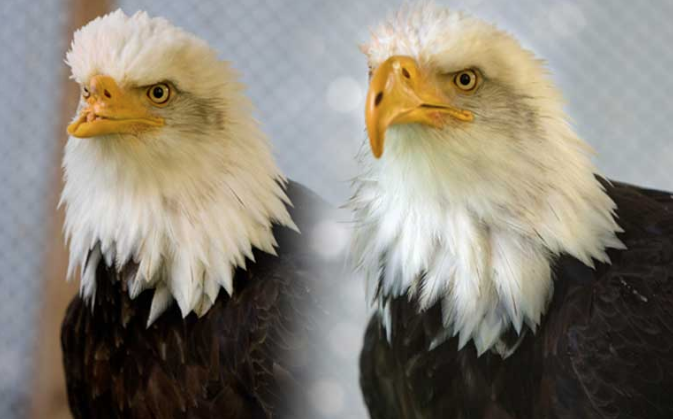
The eagle took to it immediately.
Unfortunately, the success was short-lived. After several months, Beauty’s beak grew a bit. Though less than 1.5 millimeters (0.06 in) of growth occurred, it was enough to displace the prosthetic beak.
Since then, she’s learned to adapt to her injury, and there are no current plans to design and make a new 3D beak.
For now, Veltkamp shares Beauty’s inspiring survival story in books and in virtual visits, where she teaches people about the leading causes of eagle deaths — poaching and lead poisoning from lead bullets — and explains how eagles are vital to ecology.
Veltkamp is philosophical about the team’s 3D experiment: “How do you attach something when the base is constantly changing?” she asks. “The ethical question is how many times do you subject her to the x-rays, the molds, the fittings, for something that’s a temporary fix?”
But, she adds, “Maybe the technology will catch up.”
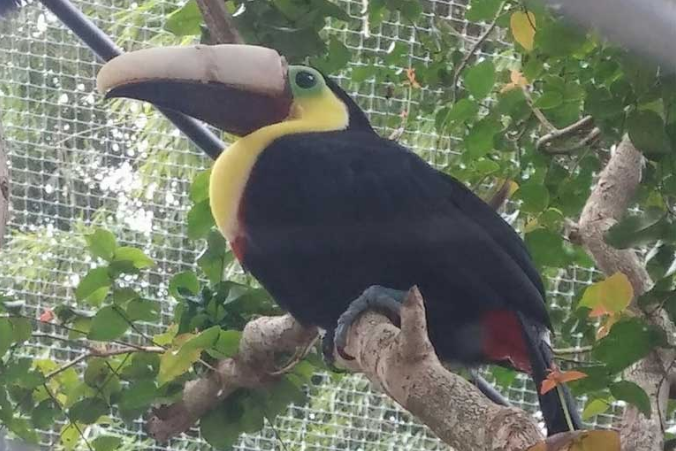
More and better beaks
Even though Beauty used her prosthetic beak for only a few months, it provided an example of what could be done with this new technology — and others followed.
One example is Tieta, a channel-billed toucan (Ramphastos vitellinus) found in an illegal wildlife market in 2015. When Brazilian officials rescued Tieta, she was malnourished and half of her upper beak was missing. Toucans need their beaks to eat, using them to pluck food from trees and employing their serrated edges to peel fruit. So caregivers at Instituto Vida Livre, an animal rescue NGO in Rio de Janeiro, put together a team to make a prosthetic 3D-printed beak.
Not only did Tieta get her new beak in 2015, but so did two other toucans that same year: Zeca in Brazil and Grecia in Costa Rica.
Zeca, a green-billed toucan (Ramphastos dicolorus), flew into a window and broke its beak. At first, rescuers in São Paulo tried to replace it by transplanting one from a deceased toucan — a fix that soon broke. Next, a team headed by veterinarian Roberto Fecchio tried printing a prosthetic. Using detailed measurements taken from photos and scans, they created a 3D model to replicate the missing beak.
Around the same time, in Costa Rica, Grecia also received a 3D-printed beak. The chestnut-mandibled toucan’s (Ramphastos ambiguus) upper red-and-yellow beak had been mutilated by a youth gang. Media reports of the incident set off a firestorm of outrage and calls for new protection laws. The result was not only new legislation against animal cruelty, but also offers of help from local 3D printing companies. But that help had to wait until Grecia’s open wounds healed, making measurements, scans and fitting possible.
As Grecia recovered, the team began their research at the Rescate Wildlife Rescue Center, where engineers, designers, dentists and ornithologists created a workable design, meeting all of the bird’s critical needs.
A toucan’s beak serves multiple purposes: eating, vocalizing, preening, and even regulating body temperature. Replicating those intricate functioning features was challenging, requiring the team to study beaks as they are used by toucans.
The design was further complicated because the prosthetic had to have both fixed and moveable parts, so that sections could be cleaned and replaced as Grecia grew. The team also preferred a design that wouldn’t need to be attached with chemical adhesive, so as to avoid any compromise in structure.
Finally, in the summer of 2016, Grecia got his new beak. While the toucan took to it quickly, it was no panacea. Every now and then, as indicated in a May 2020 Facebook post, Grecia needs a break to rest the tissue where the beak attaches.
Toucans aren’t the only birds to receive 3D-printed beaks. At China’s Dalian Forest Zoo in August 2015, a white pelican (Pelecanus onocrotalus) who lost his beak in a courtship battle became the first animal in Asia to be saved by 3D printing. According to reports, a rescue team first tried to fix the beak using an aluminum foil board. But that didn’t last, so zoo staff made a mold of the injured beak and technicians used that to design a prosthetic. After printing several prototypes, they used the fifth one made and surgically attached it with screws.
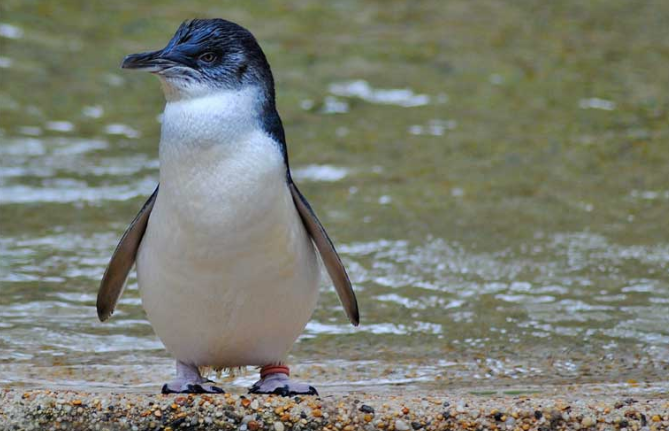
Prosthetic bird feet and more
Beaks aren’t the only animal missing parts being replicated and replaced via 3D printing. One example: Bagpipes, a little blue penguin (Eudyptula minor) who got tangled in a fishing line. His injury proved so severe that rescuers at New Zealand’s International Antarctic Centre were forced to amputate his foot.
For years, Bagpipes limped around, causing sores on his stump. The injury also stressed other body parts, like his beak and wing flippers, which he used to get out of the zoo pool.
His keepers tried giving him support by wrapping foam around his stump to create a makeshift boot. While that helped, the boot wouldn’t stay in place. Finally, in June 2016, Bagpipes got a 3D prosthetic made by Don Clucas, a senior lecturer at the University of Canterbury. As with other wildlife prosthetics, it was created via a trial-and-error process. Initial prototypes were made from hard plastic and slippery, so Clucas added rubber to the 3D-printed design, which offered better flexibility and grip.
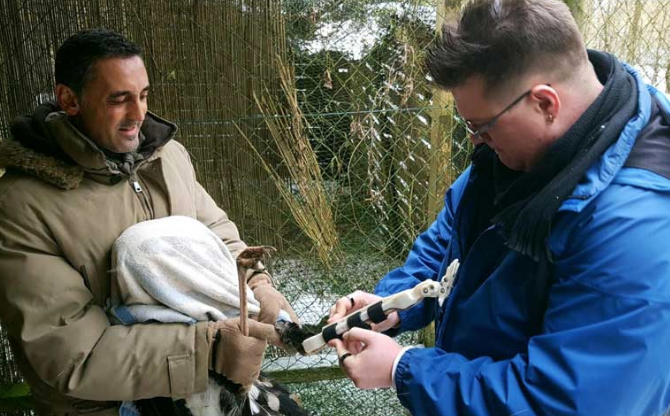
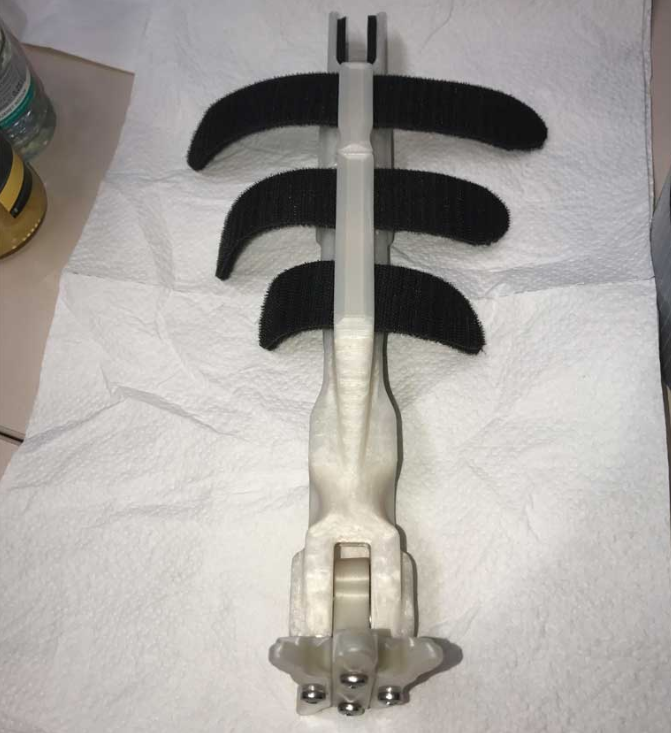
Similarly, the prosthetic leg crafted for secretary bird Söckchen involved several iterations and adjustments. Using photos taken by bird keepers, Thalmann made a rough sketch of a potential design, then went to the bird park to meet Söckchen and take measurements.
“It took three people,” Thalmann recalls. While he measured with his industrial vernier caliper, an assistant held and calmed Söckchen, while a third wrote down the measurements. “[Söckchen] was curious,” Thalmann remembers. She was “not aggressive, because it did not hurt.”
The first iteration of Söckchen’s prosthetic replicated the leg as closely as possible, and even included a movable foot. But because it was made to be durable and handle the stress of the bird’s stomp, it ended up being too heavy, and Söckchen couldn’t keep her balance. Thalmann created a second, lighter version without claws — what the engineer calls a “sport version,” which offered a better fit.
Once she had the new leg, the change in Söckchen’s behavior was dramatic. “After she got the prosthesis, and tried it, she was getting enthusiastic, eating healthy and [consuming] as much as before the accident,” Thalmann says. “The bird keeper told me, it’s like she finally realized ‘there is a new spark of joy in my life.’ And, yes, sometimes she is so crazy happy that she tries to outrun her bird keepers.”
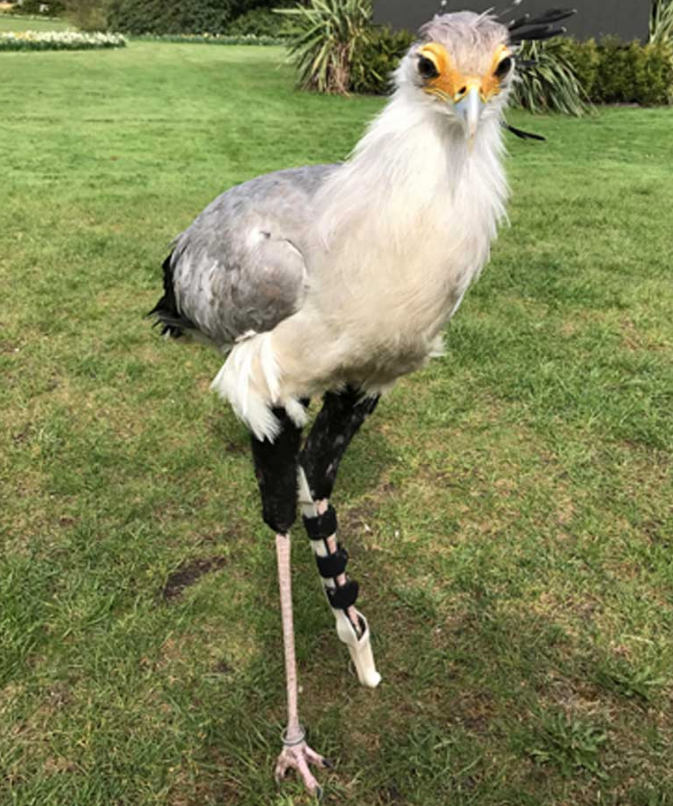
Limitations and innovations
Despite more than a decade of accumulated experience using 3D printers, the animal rescue practice is still experimental, and remains largely dependent on the efforts and enthusiasm of individual caregivers and technicians. The fitting process is still slow, and for now, the devices are limited by both the size of 3D printing machines and available materials. So, 3D-printed prosthetics aren’t the answer for every injured animal.
“From time to time, I get animal requests, but there are technical limits of what is possible,” Thalmann says. “Birds are actually perfect [for the process], because they are big but very light because of their hollow bone structure.”
For some species, including elephants, 3D-printed prosthetics are not yet a viable long-term solution. Take the case of Chhouk, an Asian elephant (Elephas maximus) at the Wildlife Alliance’s Phnom Tamao Rescue Center in Cambodia. Rescued as a baby after getting caught in what was likely a poacher’s illegal snare, Chhouk is growing fast and needs a new prosthetic foot every six months. Like other animals who have received 3D-printed devices, Chhouk is served by a team of dedicated keepers with vision, creativity and persistence. But weighty young elephants are hard on footwear, so making something durable enough to last is not an option for 3D printers — at least not yet. Though that may change.

In the meantime, the use of 3D printers to aid animals is expanding beyond prosthetics. For instance, ZooTampa in Lowry Park, Florida, is using the technology to create specialized wildlife handling tools, such as a beak for a puppet resembling a Marabou stork (Leptoptilos crumenifer) to help hand-raise and feed newborn chicks. Also, already in use during veterinary procedures are face-shaped 3D-printed anesthesia masks that fit small primates.
Though in its infancy, 3D printing as a means of helping injured wild animals has made amazing strides. And more is being tried. Caregivers have only begun to tap into the types of applications and species with which this technology might be used.
Results so far are promising, as injured animals once considered beyond help are offered a chance to survive their disabilities. And while the 3D process remains labor- and time-intensive, it especially holds out promise for saving individuals of rare and threatened species facing extinction.
Banner image: Beauty the eagle before and after the prosthetic beak. Image courtesy of Janie Veltkamp.
